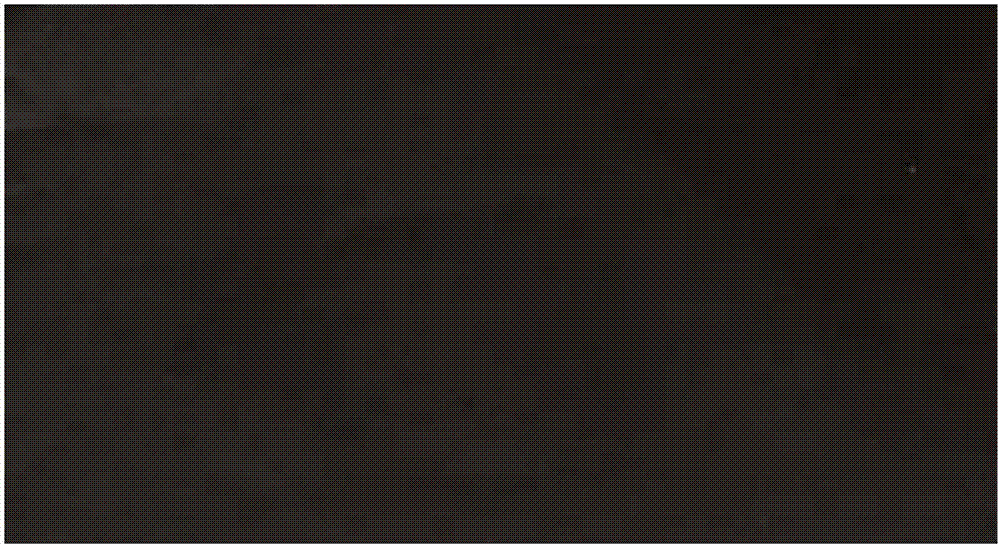Method for preparing carbon nanofiber non-woven fabric by coal hydroliquefaction residue base asphalt alkene substances
A technology of carbon nanofibers and liquefaction residues, which is applied in spinning solution preparation, non-woven fabrics, textiles and papermaking, etc., can solve the problems of carbon nanofiber non-woven fabrics that have not been reported, and can expand the scope of high value-added applications and simplify The effect of the preparation process
- Summary
- Abstract
- Description
- Claims
- Application Information
AI Technical Summary
Problems solved by technology
Method used
Image
Examples
Embodiment 1
[0025] The obtained coal direct liquefaction residue is ground into 100-300 mesh powder, and n-hexane and tetrahydrofuran are used to sequentially extract the coal direct liquefaction residue to obtain the coal liquefaction residue n-hexane insoluble matter-tetrahydrofuran soluble matter solid (i.e. asphaltenes); Recorded as AP. Dissolve 1g of AP in 5g of tetrahydrofuran solution, denoted as solution A; dissolve 1g of polyacrylonitrile in 15g of N-N, dimethylformamide solution, denoted as solution B; mix the above two solutions A and B, stir magnetically The spinning stock solution was obtained after 1 h. The obtained spinning dope is spun through an electrospinning machine, the spinning voltage is 6Kv, the ambient humidity is 30%, the receiving distance is 5cm, and the advancing speed is 0.5ml / h to obtain a nascent non-woven fabric. The obtained nascent non-woven fabric was initially pre-oxidized in a 5wt% nitric acid solution for 0.5h, washed to neutrality, and dried; in an...
Embodiment 2
[0027] The obtained coal direct liquefaction residue is ground into 100-300 mesh powder, and n-hexane and tetrahydrofuran are used to sequentially extract the coal direct liquefaction residue to obtain the coal liquefaction residue n-hexane insoluble matter-tetrahydrofuran soluble matter solid (i.e. asphaltenes), Recorded as AP. Dissolve 0.5g AP in 20g tetrahydrofuran solution, denoted as solution A; dissolve 2g polyacrylonitrile in 10g N-N, dimethylformamide solution, denote solution B; mix the above two solutions A and B, magnetically The spinning stock solution was obtained after stirring for 24 h. The obtained spinning stock solution is spun through an electrospinning machine, the spinning voltage is 15Kv, the ambient humidity is 40%, the receiving distance is 10cm, and the advancing speed is 0.2ml / h to obtain a nascent nonwoven fabric. The obtained nascent non-woven fabric was initially pre-oxidized in a 10% nitric acid solution for 7 hours, washed to neutrality, and dri...
Embodiment 3
[0029] The obtained coal direct liquefaction residue is ground into 100-300 mesh powder, and n-hexane and tetrahydrofuran are used to sequentially extract the coal direct liquefaction residue to obtain the coal liquefaction residue n-hexane insoluble matter-tetrahydrofuran soluble matter solid (i.e. asphaltenes), Recorded as AP. Dissolve 10g AP in 20g tetrahydrofuran solution, denoted as solution A; dissolve 1g polyacrylonitrile in 5g N-N, dimethylformamide solution, denoted as solution B; mix the above two solutions A and B, stir magnetically After 18h, the spinning stock solution was obtained. The obtained spinning dope was spun through an electrospinning machine, the spinning voltage was 18Kv, the ambient humidity was 80%, the receiving distance was 20cm, and the advancing speed was 2.5ml / h. The obtained nascent non-woven fabric was initially pre-oxidized in a 70% nitric acid solution for 1 h, washed to neutrality, and dried; in an air atmosphere, the temperature was raise...
PUM
| Property | Measurement | Unit |
|---|---|---|
| specific surface area | aaaaa | aaaaa |
| diameter | aaaaa | aaaaa |
| diameter | aaaaa | aaaaa |
Abstract
Description
Claims
Application Information
 Login to View More
Login to View More - R&D
- Intellectual Property
- Life Sciences
- Materials
- Tech Scout
- Unparalleled Data Quality
- Higher Quality Content
- 60% Fewer Hallucinations
Browse by: Latest US Patents, China's latest patents, Technical Efficacy Thesaurus, Application Domain, Technology Topic, Popular Technical Reports.
© 2025 PatSnap. All rights reserved.Legal|Privacy policy|Modern Slavery Act Transparency Statement|Sitemap|About US| Contact US: help@patsnap.com


